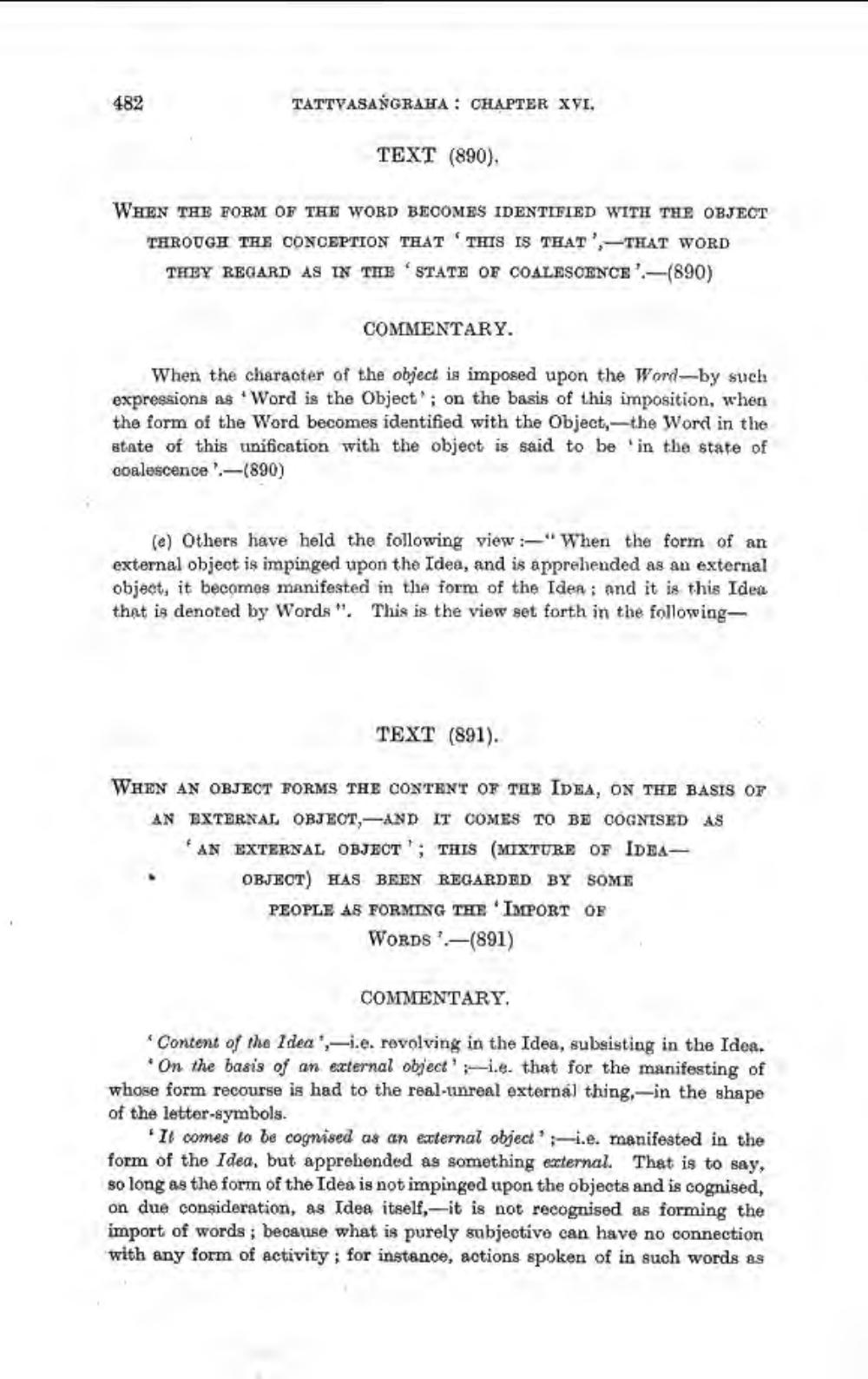________________
482
TATTVASANGRAHA : CHAPTER XVI,
TEXT (890),
WHEN THE FORM OF THE WORD BEOOMES IDENTIFIED WITH THE OBJECT
THROUGH THE CONCEPTION THAT THIS IS THAT', THAT WORD
THEY REGARD AS IN THE STATE OF COALESCENCE',-(890)
COMMENTARY.
When the character of the object is imposed upon the Word-by such expressions as Word is the Object'; on the basis of this imposition, when the form of the Word becomes identified with the Object,- the Word in the state of this unification with the object is said to be in the state of coalescence',-(890)
(e) Others have held the following view :-"When the form of an external object is impinged upon the Idea, and is apprehended as an external object, it becomes manifested in the form of the Idea ; and it is this Idea that is denoted by Words". This is the view set forth in the following
TEXT (891).
WHEN AN OBJECT FORMS THE CONTENT OF THE IDEA, ON THE BASIS OF AN EXTERNAL OBJECT, AND IT COMES TO BE COGNISED AS AN EXTERNAL OBJECT; THIS (MIXTURE OF IDEA
OBJECT) HAS BEEN REGARDED BY SOME PEOPLE AS FORMING THE IMPORT OF
Words':-(891)
COMMENTARY.
Content of the Idea', i.e. revolving in the Idea, subsisting in the Idea.
On the basis of an external object':-.e that for the manifesting of whose form recourse is had to the real-unreal external thing,-in the shape of the letter-symbols.
'It comes to be cognised as an etternal object'; i.e. manifested in the form of the Idea, but apprehended as something external. That is to say, so long as the form of the Idea is not impinged upon the objects and is cognised, on due consideration, as Idea itself, -it is not recognised as forming the import of words ; because what is purely subjective can have no connection with any form of activity; for instance, actions spoken of in such words as




